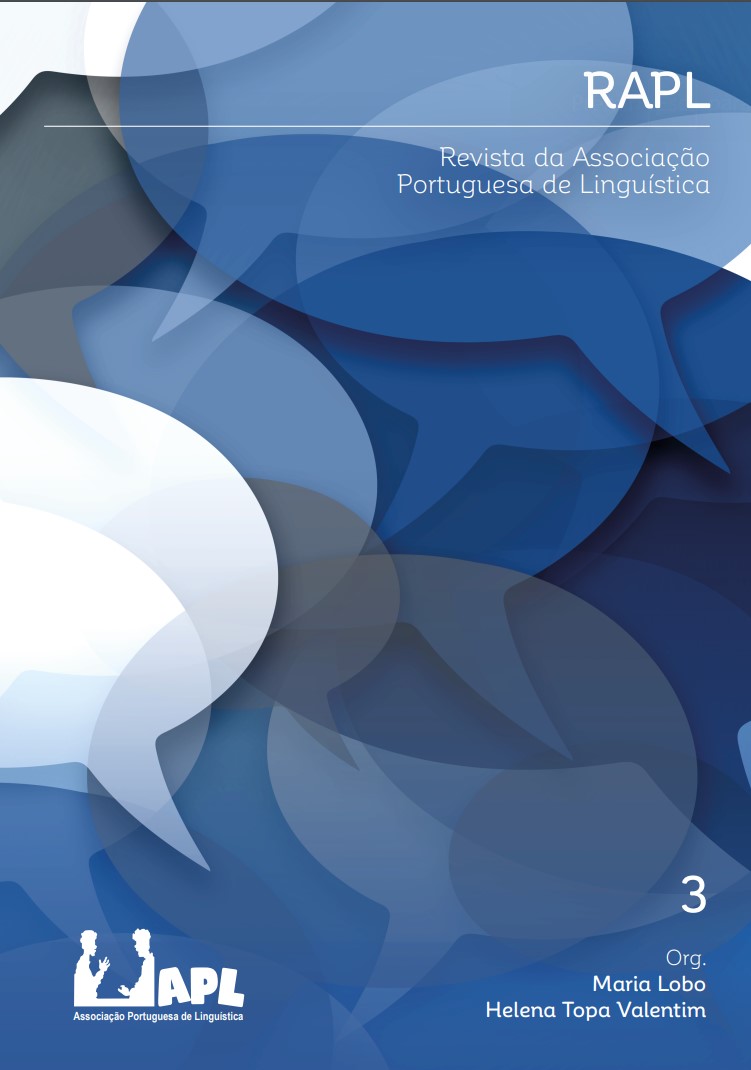Emergência de sândi consonântico em Português Europeu: uma abordagem prosódica
DOI:
https://doi.org/10.26334/2183-9077/rapln3ano2017a11Palavras-chave:
sândi, aquisição, estrutura prosódica, codaResumo
In European Portuguese, the domain for sandhi phenomena is the intonational phrase. Unlike the intonational phrase, the phonological phrase has been shown to be only relevant for rhythm and prominence-related phenomena (Frota, 2000, 2014). Fricative voicing between words (casa[ʒb]rancas, casa[ʃp]retas) and ressylabification before vowel-initial words (casa[zɐ]marelas) occur within the intonational phrase. In this study, we considered spontaneous productions of a Portuguese child (Luma), aged 2;04-4;00, to examine the acquisition of external consonantal sandhi. The data show that sandhi production varies according to the segmental (C#C, C#V, CFric, CVib, CLat) and prosodic context (clitic, prosodic word, position in prosodic structure). The data further confirm that sandhi occurs within the intonational phrase, supporting the analysis proposed for the adult grammar. This study contributes to the understanding of the relationship between the acquisition of the prosodic structure and the acquisition of sandhi phenomena.
Downloads
Downloads
Publicado
Como Citar
Edição
Secção
Licença
Direitos de Autor (c) 2017 Alexandra Malho, Susana Correia, Sónia Frota

Este trabalho encontra-se publicado com a Licença Internacional Creative Commons Atribuição-NãoComercial-CompartilhaIgual 4.0.
Os autores mantêm os direitos autorais e concedem à revista o direito de primeira publicação. Os artigos estão simultaneamente licenciados sob a Creative Commons Attribution License que permite a partilha do trabalho com reconhecimento da sua autoria e da publicação inicial nesta revista.
Os autores têm autorização para disponibilizar a versão do texto publicada na RAPL em repositórios institucionais ou outras plataformas de distribuição de trabalhos académicos (p.ex. ResearchGate).





